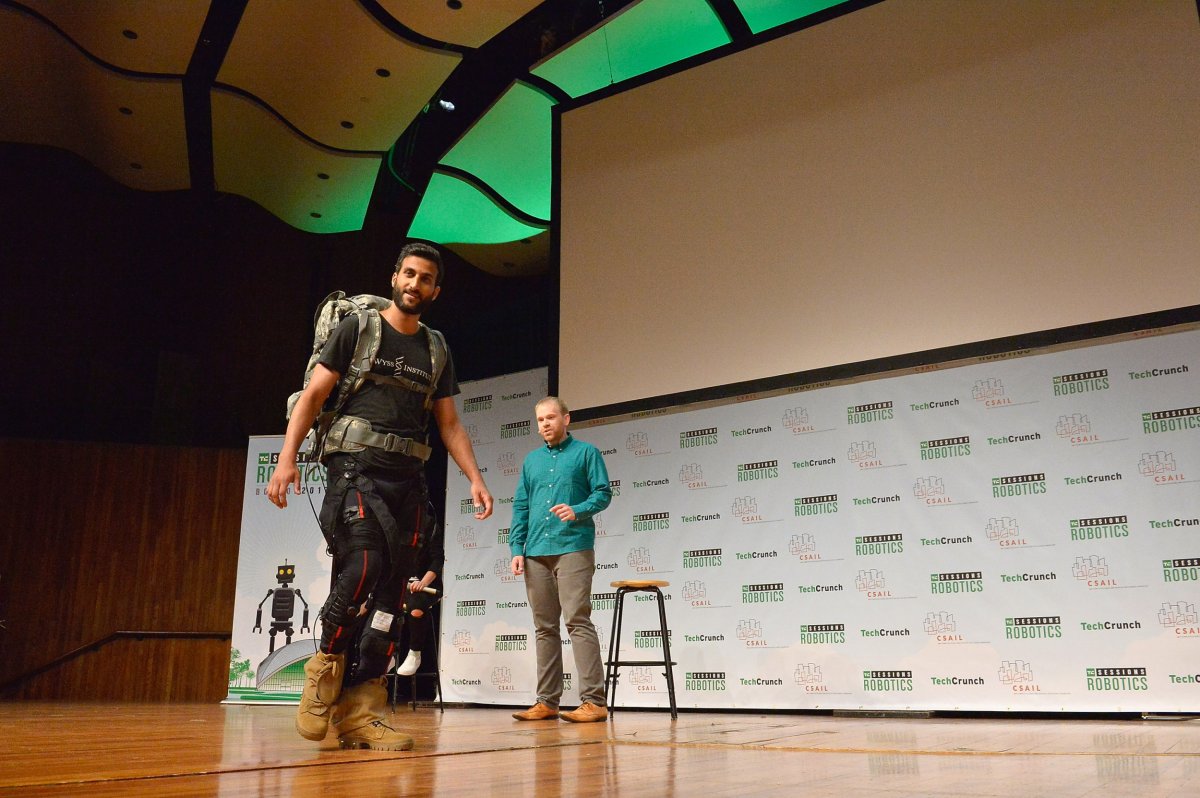Laying out their design in Science magazine on Friday, an international team of researchers have announced a groundbreaking development in assistive clothing. The breakthrough? A pair of black biker shorts.
The garment, which Harvard University's Wyss Institute is calling "a new milestone in wearable robotics," reduces the amount of energy needed to move your own body.
The robotic shorts attach to a vest and fanny pack containing microprocessors that measure movement and adjust support whether the wearer is walking or running. The visual effect is a sort of high-tech lederhosen.
How does it work? According to Science, "two electrical motors connected to cables via pulleys apply a tensile force between the waist belt and the thigh wraps to generate an external extension moment around the hip joint."
In other words, by analyzing the movement of the wearer's hips, the shorts know when to help pull each leg forward.
Wearing their suit, the researchers found, reduced the "metabolic cost" (energy needed) to walk by 9.3 percent. It reduced the energy spent while running by 4 percent.

"These reduction magnitudes are comparable to the effects of taking off 7.4 and 5.7 kilograms (16.31 lbs and 12.57 lbs) during walking and running, respectively," the researchers explained.
While not yet available to the public, the shorts could have major impacts for people with physical limitations and those required to perform high-endurance activities, like soldiers.
While other robotic devices that help with running or walking already exist, the shorts are the first to do both. The difference comes from the focus on the wearers hips, which are involved in both movements in different ways.
Researchers from Chung-Ang University in Seoul, University of Nebraska Omaha, the Wyss Institute, and Harvard's John A. Paulson School of Engineering and Applied Sciences comprised the 14-person team listed as authors on the Science article.
Dr. Conor Walsh, founder of the Harvard Biodesign Lab, led the initiative.
Robotic shorts are just the latest in a string of marvels developed by Walsh's lab. Recent victories include tools for minimally invasive heart surgery and a robotic glove straight out of the future.
David Perry, a Harvard engineer who worked on the project, described wearing the shorts to Scientific American, saying, "After wearing the system for 15 minutes or so, you start to question if it's really helping at all, because you just feel like you're walking."
"Once you shut it off, however," he continued, "your legs suddenly feel heavy, and you realize how much it was helping. It's a lot like stepping off the end of one of those moving sidewalks at the airport."
Uncommon Knowledge
Newsweek is committed to challenging conventional wisdom and finding connections in the search for common ground.
Newsweek is committed to challenging conventional wisdom and finding connections in the search for common ground.
About the writer
To read how Newsweek uses AI as a newsroom tool, Click here.








